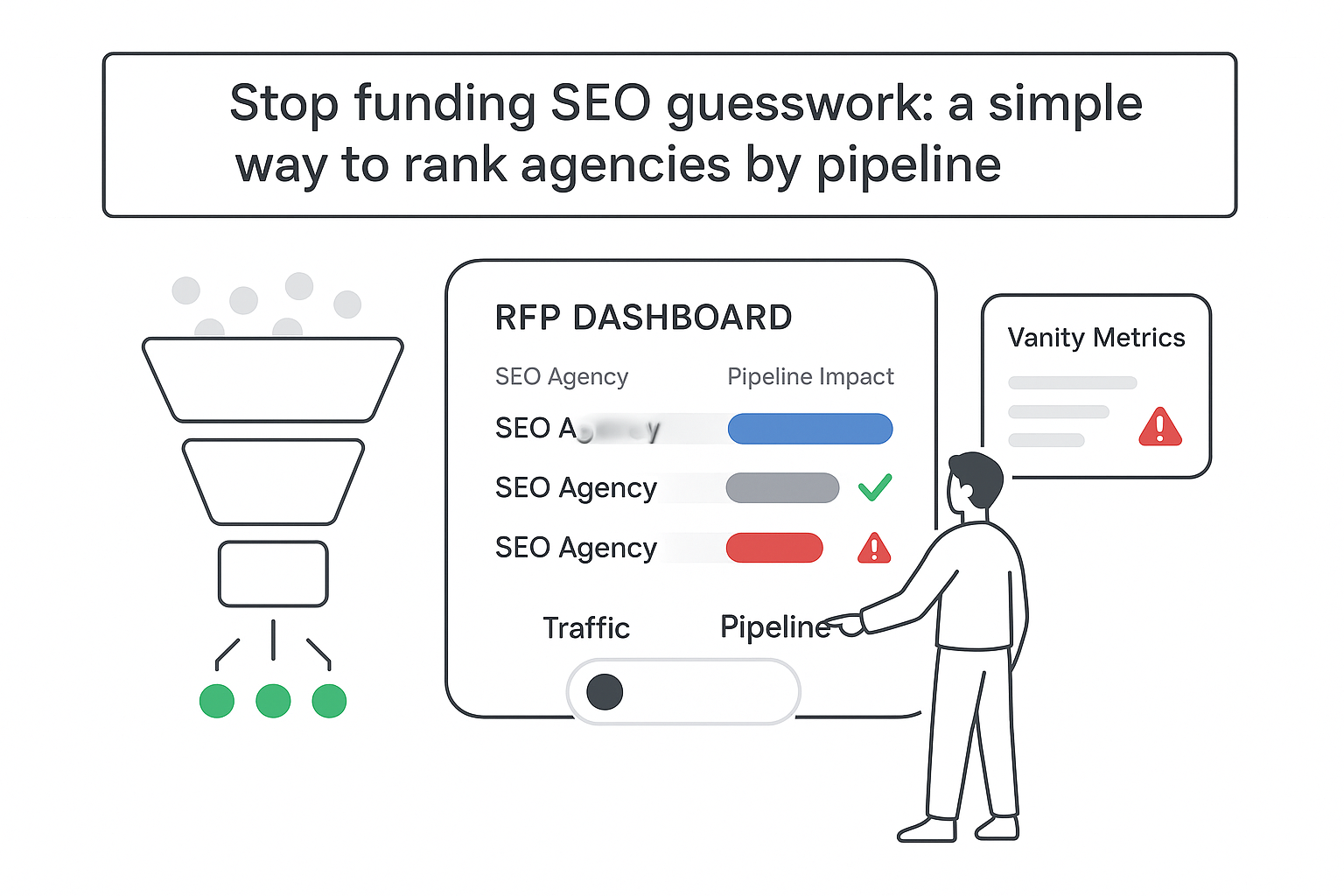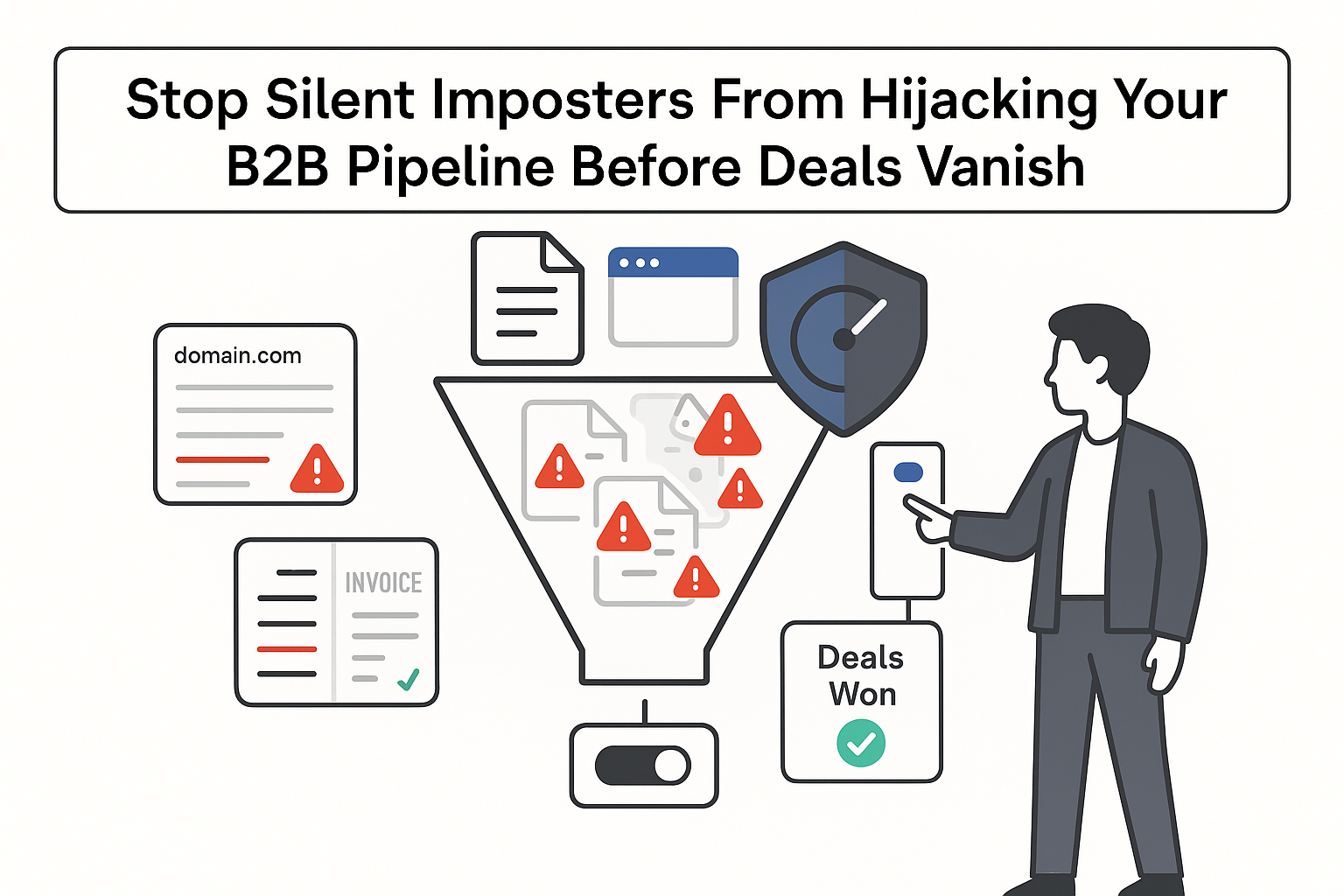Another quarter, another finance meeting, and another spreadsheet showing organic clicks sliding into the red. Sound familiar? B2B teams everywhere tell me the same story: visitors no longer arrive through the trusty “ten blue links.” They grab what they need from Google’s AI Overview, Perplexity’s answer box, or a ChatGPT snippet and never even see your pixel-perfect landing page. If that knot tightens in your stomach, keep reading.
Generative search: what it actually means
“Generative search optimization,” or GEO for short, is the craft of convincing answer engines to cite your brand inside their instant summaries. Classic SEO is alive, but the real estate for plain hyperlinks shrinks daily, so revenue teams feel the pinch first.
The term itself comes from a 2023 GEO study that measured a 40 % visibility lift when brands supplied clearly quotable facts. Not everyone buys the hype – shared a great GEO critique highlights gaps in the original methodology, and both perspectives are worth a skim.
Quick history lesson
- 1998-2020 – Someone googles a keyword → ten blue links appear → a click happens.
- 2021-now – Someone asks a large language model → a synthesized paragraph shows up → they might tap a tiny citation if you’re lucky.
Foundation’s explainer and Search Engine Land’s coverage outline the macro shift, but the street-level proof is even clearer: a Boston SaaS consultancy saw 42 % of last quarter’s demo requests come from a single SGE blurb quoting its pricing benchmark – far more than any organic link managed in six months.
How GEO differs from old-school SEO
Traditional SEO still leans on backlinks, keywords, and a squeaky-clean technical stack. GEO introduces new success factors: punchy stats, crystal-clear attribution, and text that gives the answer in the opening line.
- Core signals – SEO: link juice and keywords. GEO: quotable nuggets and unambiguous entities.
- User mindset – SEO: click to explore. GEO: read, remember, maybe revisit later.
- KPI – SEO: rank and sessions. GEO: citation share and pipeline lift.
- Output – SEO: ordered links. GEO: blended paragraphs, tables, even voice responses.
When to double down on GEO
If 80 % of your leads originate from how-to articles, keep the long-tail grind alive. But if your C-suite now barks questions at Alexa – “Which agency knows B2B lead gen?” – ignoring GEO is risky. Track both your search ranking and how often answer engines cite you; the moment citations plateau while rankings hold steady, you are bleeding brand visibility.
The overlap and the gap
Site hygiene – crawling, E-E-A-T, internal links – still matters. One telecom client fixed orphan pages, rewrote stale bios, and saw Screaming Frog quality scores jump 18 %. Two weeks later Perplexity began lifting passages verbatim. Good plumbing feeds humans and robots alike.
Where GEO veers off-road:
- Prompt drift: rambly sections can push a model to prefer a competitor’s phrasing.
- Citation odds: numbers, names, dates, and direct quotes win links in snapshots.
- Multimodal inputs: alt text on charts, captions on videos – every extra hook counts (visual search is coming fast).
- Entity clarity: spell out whether “Acme” is the product or the holding company (Entity optimization helps).
- Answer-first framing: lead with the punch line; details can follow.
Why move now
Google’s SGE reached U.S. users in May 2024. Gartner predicts a drop in traditional search volume by 25% by 2026. ChatGPT already counts over 180.5 million monthly active users, while Perplexity interest has jumped 858% year-over-year and sits at around 10 million active monthly users. Waiting a year is code for losing share.
Payoffs B2B executives actually care about
- Better lead quality – A Denver IT shop logged a 27 % jump in demos once it showed up in Perplexity footnotes.
- Faster deals – Prospects arrive knowing the basics, trimming an entire discovery call.
- Lower CAC – SGE mentions replaced roughly $14 k a month in retargeting ads.
- Word-of-mouth lift – People paste cited domains into Slack or Teams; dark social loves citations.
A practical, non-robotic roadmap
- Start with real questions. Ask ChatGPT what a CFO wonders about your niche, then sanity-check volume in Ahrefs.
- Build an entity-rich outline. List the people, tools, dates, and vocabulary that telegraph authority.
- Mark up everything. FAQ blocks, pricing tables, how-to steps – give parsers the schema buffet.
- Earn quotes. Get your CMO on a podcast; LLMs adore sound bites with names attached.
- Mix in multimedia. Annotated charts, transcripts, descriptive alt text – it all widens the context window.
- Seed the web. Post key excerpts on LinkedIn threads, industry subreddits, Stack Overflow – models crawl those too. Foundation’s Reddit Marketing initaitives show sentiment on Reddit often mirrors what LLMs surface.
- Measure like you mean it. Spin up a Looker Studio panel for citation frequency, assisted revenue, and time-to-close, or run your pages through HubSpot’s AI Search Grader for a quick health check.
Keeping the flywheel spinning
Run a monthly “ego search” in ChatGPT to see who it is quoting. Skim Google’s AI-Overview change log each quarter, tweak structured data, and rewrite fuzzy sections. And don’t skip video alt text – multimodal SGE is knocking at the door. Looking ahead, voice search and other large language models will only tighten the screws on citation-first content.
Bottom line: Traditional SEO keeps the lights on. GEO ensures your brand shows up in the answers people trust right now, not just the links they might click later. Treat it like a side experiment and you will play catch-up forever; treat it like a core channel and you will harvest the upside while everyone else is still arguing about best practices.







.svg)